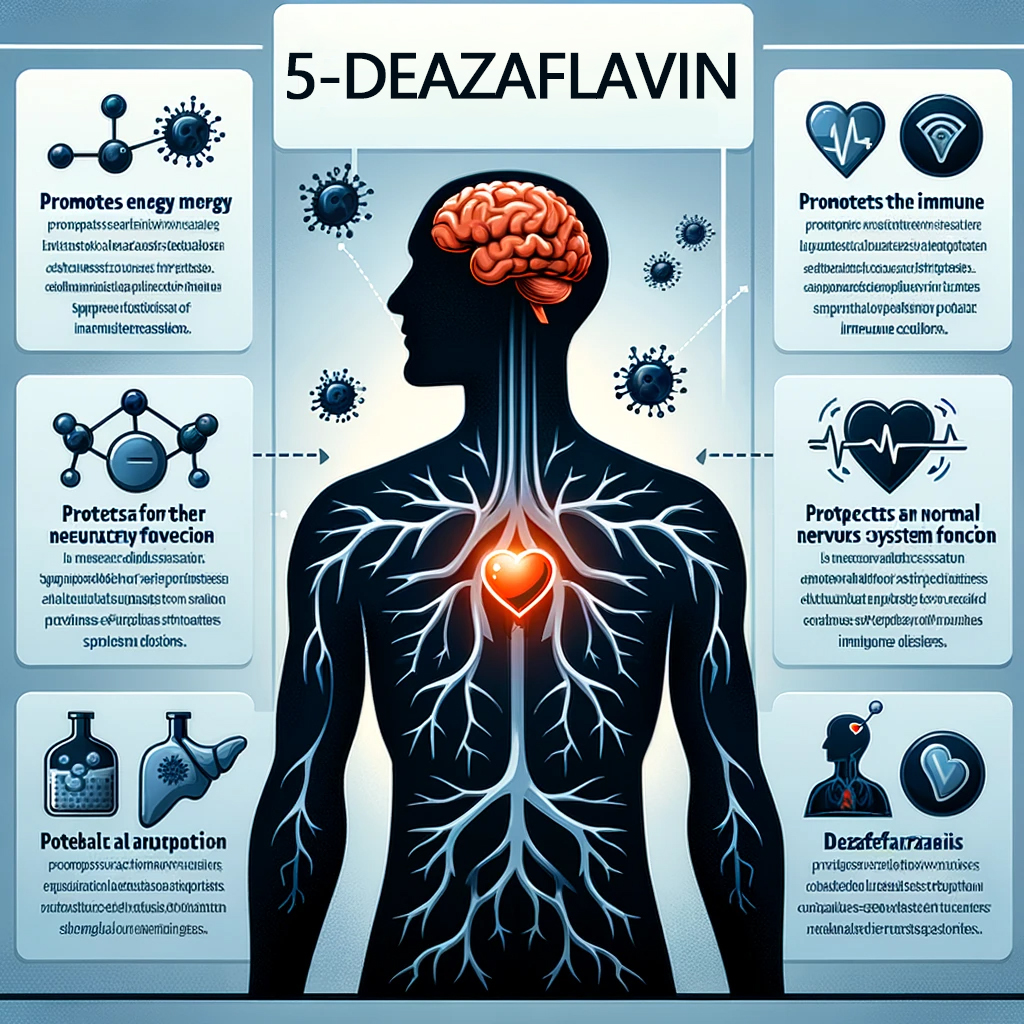5-Deazaflavin is a synthetic analog of flavin mononucleotide (FMN) and is primarily used in scientific research and experimental studies. It has a structure similar to FMN, which is an important coenzyme in biological systems, particularly involved in redox reactions.
Since 5-Deazaflavin is not widely used as a therapeutic drug and is mainly investigated in the context of biochemical and pharmacological research, detailed clinical data on its efficacy, side effects, and special precautions are limited. However, here is what is generally known from research studies:
Effectiveness of 5-Deazaflavin:
- 5-Deazaflavin has been studied for its potential as a tool in studying redox reactions and enzymatic processes involving flavin-dependent enzymes.
- It may act as an inhibitor or modulator of certain flavin-dependent enzymes due to its structural similarity to FMN.

Side Effects of 5-Deazaflavin:
- Side effects of 5-Deazaflavin are not well-documented, as it is not a commonly used therapeutic agent.
- As it is generally used in laboratory settings, safety concerns are mainly related to handling and exposure during experiments, particularly if it comes into contact with skin, eyes, or is inhaled.
- Since 5-Deazaflavin is not used for human consumption, there is little to no data on long-term safety or side effects in humans.
Special Precautions of 5-Deazaflavin:
- Handling precautions: As with many synthetic compounds, precautions should be taken to avoid direct contact with the skin or eyes, and proper lab safety protocols should be followed, including the use of gloves, goggles, and fume hoods.
- Environmental and disposal considerations: Researchers should adhere to standard protocols for the disposal of chemical substances and prevent contamination of the environment.
- Limited clinical experience: There is little information regarding its safety profile in human clinical use, so it should only be used under controlled conditions, typically in a research setting.

Conclusion:
5-Deazaflavin is primarily a research tool rather than a clinically used compound. Its role is more centered around understanding biochemical pathways rather than direct therapeutic applications. The safety profile in humans is not well established, and it should be handled with caution in laboratory settings.
If you’re looking for more specific data from recent studies, I’d be happy to help look that up!
